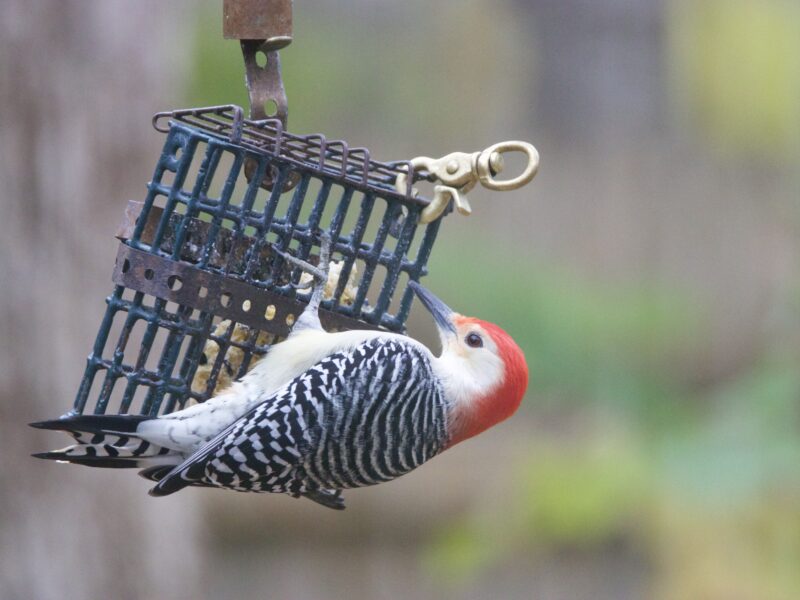
Winter bird flocks are a special lot. They travel around each other in hopes that at least one member of the flock knows where to go to find food. The winter feeding flock can be as large as 30 or 40 birds, but nine times out of 10 it is only 10 to 20 birds large.
Unlike migratory flocks in the spring or fall, which tend to be species-specific, a winter feeder flock is almost always diverse. The more different sets of eyes on the lookout, the better the chances of not going to bed hungry.
Most bird feeders display grains and other seeds prominently. Not all birds eat grains, but almost all of the members of a feeder-diverse flock do.
It used to be, when I was growing up on the North Fork in the 1940s and 1950s, that bread was the standard handout for any birds that chose to visit. We would break the bread, mostly white bread, up into pieces and throw it out the window. As soon as a passing bird spotted it, it would start to be eaten. We also would nail chunks of suet to a post or tree trunk as a secondary source of food.
Almost all birds could handle stale bread and suet. And there were no hawks around to worry the feeders.
But by the time the 1960s and 1970s rolled around, hawks protected by state and federal laws were making a comeback, and grocery and hardware stores had begun to sell bags of bird seed on eastern Long Island. The food they sold was more nourishing, more diverse and more appetizing.
Thus, the feeder birds had to be more watchful, but when they did feed, the food was more to their liking.
In the 2000s, it seems, every other house has a bird feeder or two, and a bird bath. Competition for exotic winter birds sprung up here and there. The birds loved it — they didn’t mind becoming the center of attention.
There have been annual bird counts on Long Island every Christmas season since the early 1900s. Now, the counts began to include feeder flock birds as well. The counters know where feeders had been established in their respective count territories. They would consult with the feeder maintainers either in person or by phone. Count numbers jumped by factors of two and three times.
Yes, it’s time for little chickadees, nuthatches, Carolina wrens, woodpeckers, titmice, English sparrows, house finches and the larger cardinals, mourning doves, flickers, and blue jays to show up in one busy flock at your feeding station at that regular time each day. When a rare or unusual species, such as gnatcatcher, winter wren, evening grosbeak or red-headed woodpecker, shows up to feed, the news travels from birder to birder, the rare species is listed and gets to become an Audubon count species.
The regular time of appearance at a particular location along the feeding route is fairly constant throughout the week but differs from the regular time the traveling flock shows up at a feeding station a quarter mile or half mile away. After a while, the feeder and/or observer through the window glass knows the best time to look out.
Some of the members of a wandering flock may stick around or show up more or longer than the others. One or two may even hang around for an entire day or group of days.
Among a feeder flock, one or two birds stand out as protectors of the others. Blue jays are very good at fulfilling such a role. They often watch and wait for the smaller birds to finish before indulging themselves.
Different winter feeding rituals are many. Each year, it seems, a new food or practice is put into play along with the traditional ones. One thing is certain, however: No one puts out bread crumbs from white breads. Birds don’t like it!